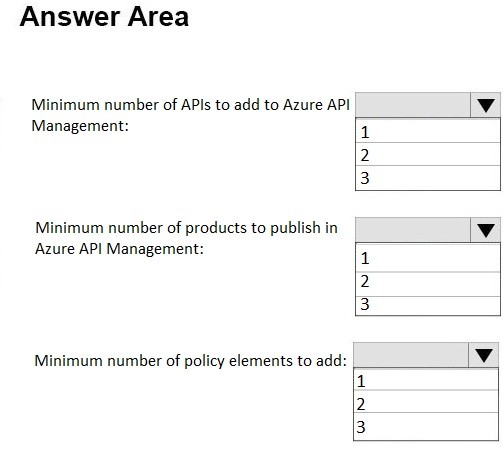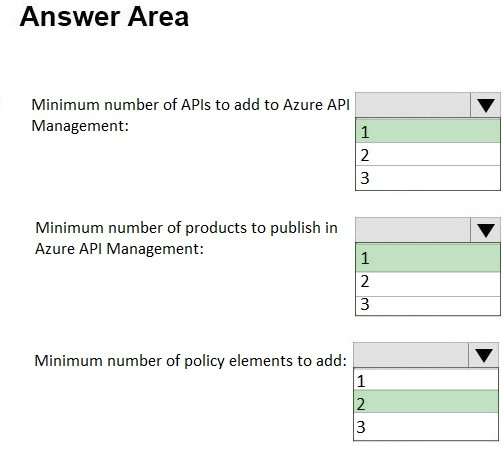

HOTSPOT -
Your company has an API that returns XML data to internal applications.
You plan to migrate the applications to Azure. You also plan to allow the company's partners to access the API.
You need to recommend an API management solution that meets the following requirements:
✑ Internal applications must receive data in the JSON format once the applications migrate to Azure.
✑ Partner applications must have their header information stripped before the applications receive the data.
What should you include in the recommendation? To answer, select the appropriate options in the answer area.
NOTE: Each correct selection is worth one point.
Hot Area:

Shiven
Highly Voted 5 years, 1 month agoKaawa
4 years, 11 months agomykolaantoniv
Highly Voted 5 years, 4 months agotartar
4 years, 9 months agoAghora
Most Recent 4 years, 4 months agoyaiba
4 years, 3 months agoazurecert2021
4 years, 4 months agoJohnWick2020
4 years, 4 months agoglam
4 years, 4 months agosanketshah
4 years, 6 months agosanketshah
4 years, 6 months agoMarang73
4 years, 8 months agoMerio
4 years, 9 months agodumbu
4 years, 10 months agocj93s3
4 years, 10 months ago[Removed]
4 years, 10 months agoHarkonnen
4 years, 11 months agoTest_Taker
4 years, 11 months agogboyega
4 years, 11 months agoNeetiniti
4 years, 11 months agoAaru
4 years, 12 months ago